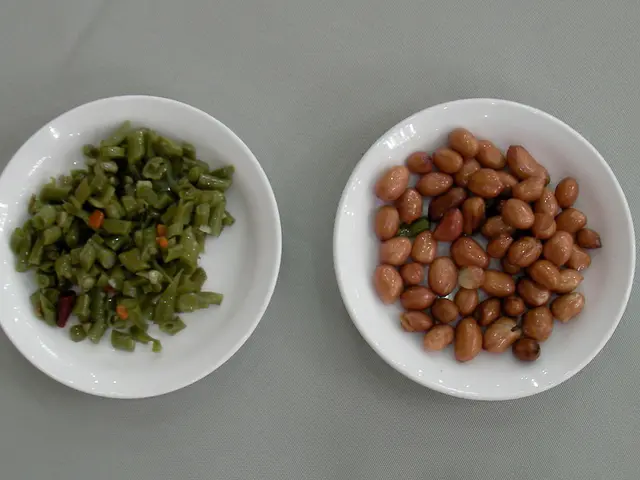Frequency of Laundering Comfortable Garments During the Coronavirus Outbreak
Quarantine Fashion and Laundry Hygiene: A Guide for COVID-19 Safety
As the world navigates the COVID-19 pandemic, maintaining good hygiene practices has become more important than ever, even when it comes to laundry. Dermatologist Alok Vij offers some practical advice for managing your laundry during this time.
First and foremost, when it comes to clothing worn during illness or possible COVID-19 exposure, it's crucial to wash them immediately. Do this in the regular laundry, using detergent, at the warmest water setting safe for the fabric. It is safe to combine clothes from sick people in the same load[1].
For general quarantine fashion or "couch couture" clothing that remains clean, you can wear multiple times before washing if not visibly soiled or worn extensively[1]. However, for regular items such as sweats, leggings, and pajama jeans, it's a good idea to wash them after each use if you have been outside or in close contact with others, to minimize germ spread.
Handling dirty laundry also requires good hygiene practices. Always wash your hands after handling dirty laundry, especially if someone is sick[1][3]. Additionally, clean and disinfect laundry hampers regularly to reduce contamination risk[1].
When it comes to washing, normal laundry detergent and warm water cycles are sufficient for killing the coronavirus. Washing clothes with soap and water physically destroys the virus and removes it from the clothes[4]. Hot water and detergent effectively destroy the virus on fabrics[5].
Dr. Vij also advises peeling off outer layers of clothing upon returning home, especially if near a sneezing or coughing person. Tighter garments may get stinky faster due to friction against skin, causing dead skin cells and oils to trap in the fabric. Tighter clothes should be worn once or a couple of times before washing[2].
While there is no need for special detergents or separate washing machines, extra care in hygiene is advised when managing laundry from a sick individual[1]. Dr. Vij also recommends using hand sanitizer in cars after public outings.
This advice corresponds to established hygiene guidance during the pandemic and applies to all fabric types typically worn for quarantine fashion, sweats, leggings, and pajama jeans. By following these guidelines, you can strike a balance between practical fashion comfort during quarantine and infection control.
[1] Centers for Disease Control and Prevention. (2020). How to wash laundry to remove the virus that causes COVID-19 from fabric. Retrieved from https://www.cdc.gov/coronavirus/2019-ncov/prevent-getting-sick/how-covid-19-spreads.html
[2] Vij, A. (2020). Personal communication.
[3] World Health Organization. (2020). Q&A on coronaviruses (COVID-19). Retrieved from https://www.who.int/news-room/q-a-detail/q-a-coronaviruses
[4] National Health Service. (2020). Coronavirus (COVID-19): how to wash your clothes to keep them germ-free. Retrieved from https://www.nhs.uk/live-well/healthy-body/coronavirus-covid-19-how-to-wash-your-clothes-to-keep-them-germ-free/
[5] Environmental Protection Agency. (2020). List N: Disinfectants for Use Against SARS-CoV-2. Retrieved from https://www.epa.gov/pesticide-registration/list-n-disinfectants-use-against-sars-cov-2
- To protect one's health during the pandemic, it's essential to prioritize nutrition along with fitness-and-exercise to maintain a balance and boost immunity.
- In terms of fashion, incorporating health-and-wellness-inspired activewear into quarantine wardrobes can encourage regular exercise and promote a positive mindset.
- Additionally, adhering to strict hygiene practices in food preparation can help reduce the risk of contracting COVID-19, ensuring overall health and well-being.





